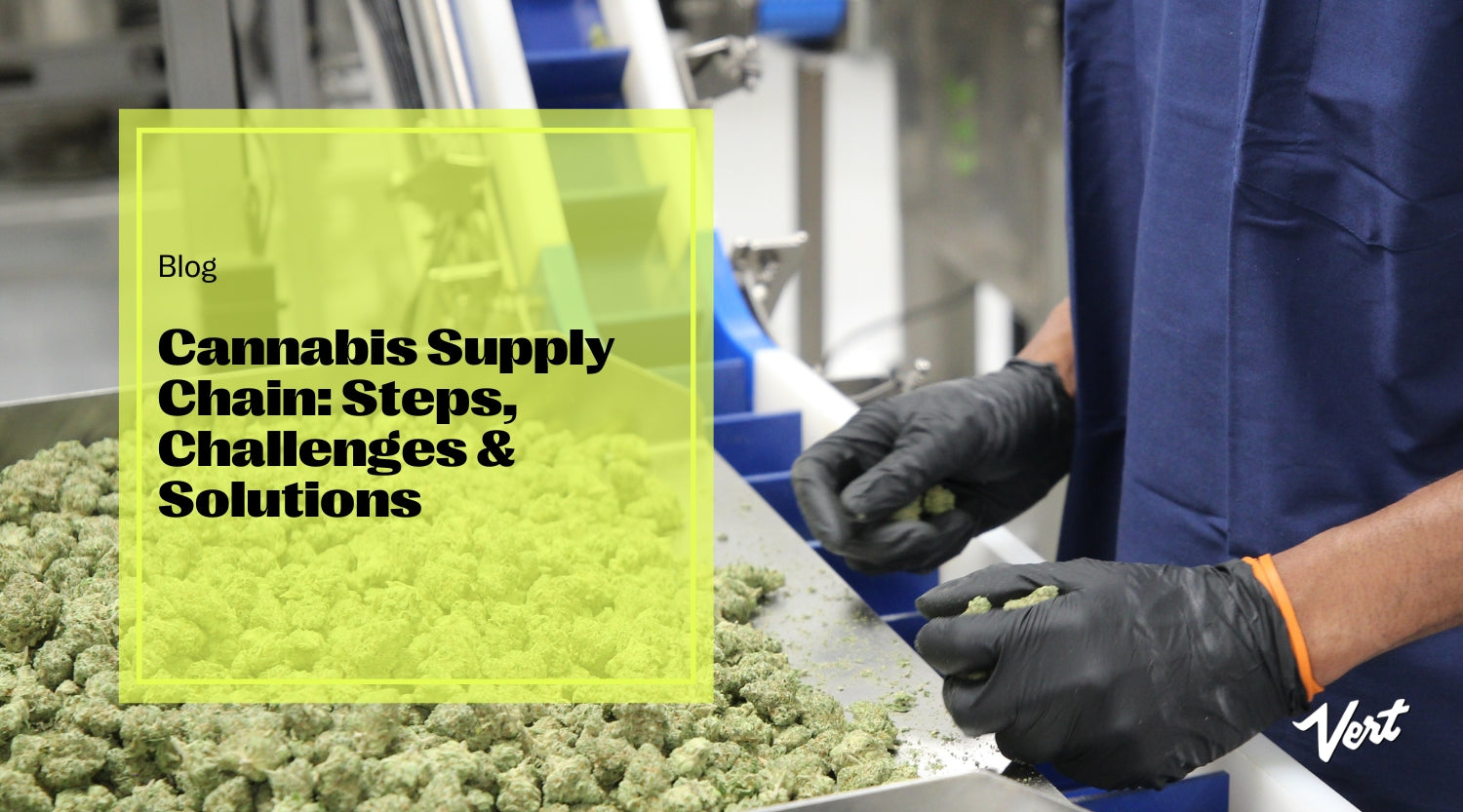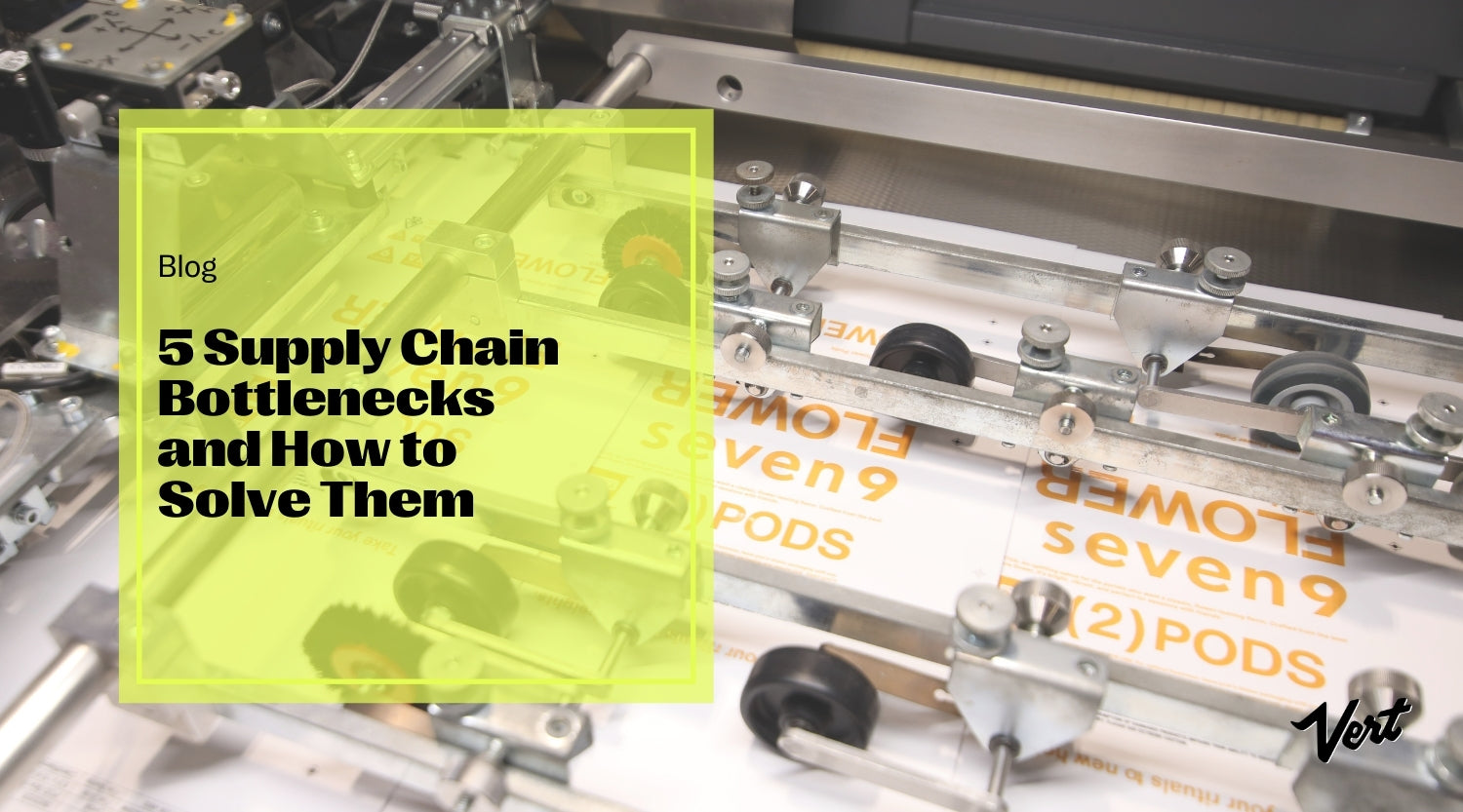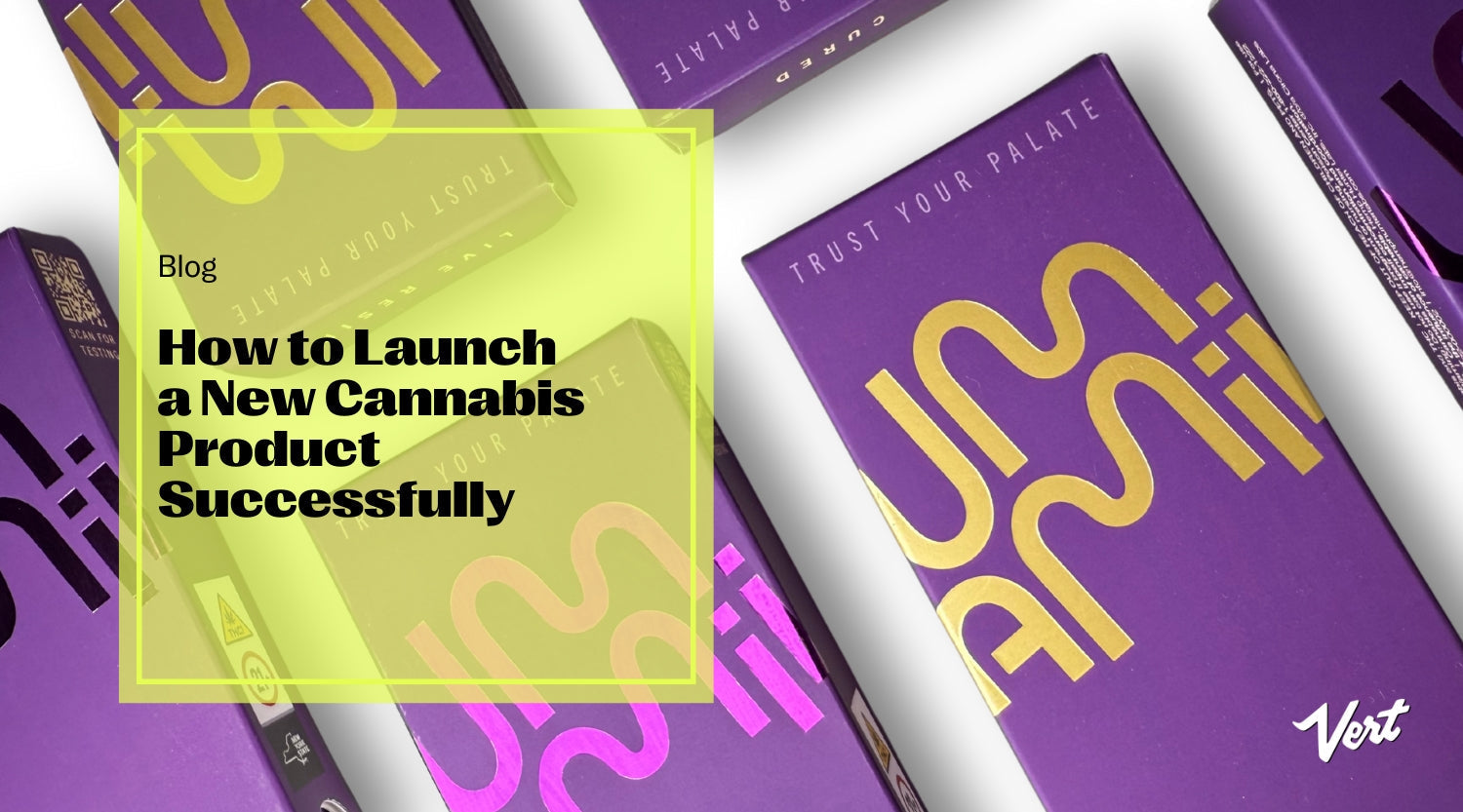The cannabis supply chain is complex and faces unique challenges within a rapidly evolving regulatory backdrop. Unlike most traditional industries, cannabis businesses grapple with varying state and local laws, strict compliance requirements, and challenges maintaining consistently high-quality raw materials.
Understanding the steps in cannabis supply chain management, identifying common obstacles, and exploring innovative solutions are crucial for ensuring smooth and efficient supply chain operations.
Partnering with experts who can solve potential stumbling blocks along the supply chain will prove key to running a professional and highly efficient business in the cannabis industry.
Step 1. Cultivation
The cannabis cultivation process comprises six stages that take the cannabis plant from germination to harvesting. Strict control measures apply to marijuana and hemp cultivation in the United States.

The plant is harvested at various times depending on the type of product it will be used for. For example, hemp grown for fiber is harvested before flowering, while cannabis for smoking or cannabis products is generally harvested when 5-15% of its trichomes are milky or amber.
If the cannabis is not immediately frozen after harvest to be used for live extracted products, the cultivation stage also includes drying the plant. This takes anywhere from 2 to 14 days.
Challenges & Solutions at the Cultivation Stage
Successful and timely cultivation of your product depends on many variables. Accurately predicting the timescales involved in producing your raw material is challenging. This uncertainty can cause bottlenecks if your company hasn't prepared contingency plans for delays or you lack historical data on which to base strategic decisions.
Some stages in the cultivation process like drying and storage can also impact the quality of your raw material. For example, the total amount of THC, CBD, and other major cannabinoids decreases when storage and drying temperatures increase. Environmental factors that change how your product is dried or stored could significantly impact your supply of exceptional buds.
Solving supply chain bottlenecks is only possible by ensuring tight supply chain operations every step of the way. Only work with companies along your supply chain that deliver consistently high-quality products in a timely manner. Working with perishable products means a slow or uncommunicative supply chain partner can have devastating consequences for your inventory.
Step 2. Manufacturing
The manufacturing stage involves transforming raw cannabis materials into diverse consumer products. This phase encompasses various processes including extraction, distillation, formulation, and bulk packaging.
Extraction techniques—including non-solvent extraction and solvent-based methods—isolate the desired cannabinoids and terpenes from the plant material. These extracts are then refined and formulated into products like edibles, tinctures, topicals, concentrates, and vape cartridges.

The manufacturing stage demands strict adherence to Good Manufacturing Practices (GMP) to ensure product safety, consistency, and potency.
Challenges & Solutions at the Manufacturing Stage
The biggest challenge for cannabis companies during the manufacturing stage is guaranteeing a consistent, timely, and high-quality product. Cannabis yields can fluctuate, meaning cannabis brands must have agile solutions in place to face potential delays. This makes it critical for operators to know multiple manufacturing cost reduction measures.
Draw up contingency plans that detail how to face problems in the manufacturing phase and how to keep up with customer demand when setbacks occur.
Step 3. Cannabis Testing
Testing is a critical step in quality assurance and ensuring regulatory compliance for adult-use and medical cannabis. Cannabis-based products must go through a series of meticulous examinations that assess their potency and safety.
Cannabis products must be tested in authorized labs that look for any signs of contamination, use of banned pesticides, mold, and mildew. They must go through two stages of testing; the first is carried out before selling the harvest. The second applies to any products modified from the original flower like edibles or cannabis extracts. The final, modified product will go through further tests using a sample batch.

Testing results are critical to keeping your products compliant with consumption and labeling laws and for maintaining the quality of your product. Strict laws govern cannabis testing and labeling.
However, non-compliance is rife in the industry. One such example is the mislabeling of hemp. Hemp is defined as cannabis containing 0.3% or less THC. However, a study into the labeling of hemp products found that 49 out of 53 samples were incorrectly labeled as hemp as they technically met the federally established classification of marijuana.
Similarly, a 2023 study into THC potency in adult-use cannabis found that around 70% of the products tested inflated their THC content. This is exactly the type of behavior that can get your company in hot water with the law as well as your customers.
If building a brand is all about trust, accurate testing and labeling are key parts of this.
Challenges & Solutions at the Testing Stage
Making sure your products stay compliant is one of the biggest challenges faced by any cannabis brand. Staying on the right side of the law as regards compliance must be a number one priority. Ultimately, cannabis companies are responsible for staying compliant and being honest about the content and quality of their products.
Step 4: Packaging and Distribution
Packaging and distribution are two crucial stages in the cannabis supply chain. Cannabis businesses can handle distribution themselves or use third-party channels. These third-party distributors often test and package products themselves and organize the distribution that connects growers and producers with retailers.

The packaging stage of the cannabis supply chain represents far more than simply placing products in containers; it's a critical point of compliance, branding, and consumer safety. This stage involves selecting and designing packaging that preserves product quality and potency and also adheres to stringent regulatory requirements.
Child-resistant packaging is mandatory in most jurisdictions, and labeling must provide accurate information about product contents, potency, and potential risks. All this is on top of a cannabis brand’s need for packaging that serves as a crucial branding tool and conveys the brand's identity to attract consumers in a competitive marketplace.
Challenges & Solutions at the Packaging and Distribution Stage
Problems occur at the distribution stage when supply doesn’t meet demand. This can occur due to a lack of foresight, an unexpected surge in demand, or problems with your packaging supply.
Working with an experienced and highly efficient cannabis packaging company that integrates into your supply chain and keeps a line of sight on your packaging inventory management ensures your packaging needs are covered on demand.
This is crucial for businesses looking for ways to improve speed to market while keeping control of costs.
Ensure Packaging Compliance
Staying compliant with both state- and federally-mandated regulations is top of mind for brands in emerging markets. Working with an agile packaging partner who understands the ins and outs of compliant packaging will put your company at an advantage.
Your cannabis packaging company can advise you on all the legal aspects of labeling, including the types of graphics allowed in each state and other considerations like child-resistant packaging requirements. They will then customize packaging to align with your brand, including custom embellishments and a stand-out logo that complies with regulations.

Step 5: Transportation
The transportation stage of the cannabis supply chain is a critical link between cultivation, manufacturing, and retail. Cannabis’s legal status makes transit a stage fraught with unique challenges. It’s vital to keep up to date with all the legal requirements surrounding the transit of cannabis products to ensure you comply with local and state regulations.
Challenges & Solutions at the Transportation Stage
The two main problems cannabis brands face at the transportation stage are maintaining product integrity and quality during transit and navigating complex state and local regulations.
Maintaining Product Integrity During Transit
Cannabis products are highly susceptible to environmental factors that impact their potency, freshness, and aromatic qualities. Your company must guarantee optimal transit conditions so your product offers the perfect experience when it arrives to the customer.
Retaining your products’ potency and unique flavor and aroma profile involves avoiding damaging environmental factors. For example, humidity can cause mold or mildew contamination while overly dry or hot conditions will dry out the bud’s trichomes. Extreme temperature fluctuations can also impact the quality of edibles like cannabis-infused beverages.
Using temperature-controlled vehicles and specialized handling procedures is a must during transit. Your choice of packaging is also key to keeping your product optimally fresh when it arrives to the consumer.
Premium products deserve top-quality packaging like POP VAC jars that offer the perfect size, seal, and interface to preserve the quality and potency of your products.

Staying Compliant During Transportation
Staying compliant while transporting cannabis products is a question of understanding local and state laws. Ensure everyone involved in the transportation of your products is fully licensed and fulfills any other legal requirements. Staff training will also be vital to ensuring regulations aren’t broken inadvertently.
Keep in mind cannabis cannot be transported over state lines. So making sure routes stay in the same state the plant is cultivated is important to work out with your logistics carrier.
Step 6. Retail

Retail is perhaps the most transparent stage of the cannabis supply chain. Cannabis brands have three main ways to sell their products to consumers:
- Selling products in a dispensary: Cannabis products must have strong shelf appeal to thrive in a dispensary.
- Selling products online: This requires a heavy emphasis on digital marketing and a strong social media presence to achieve the reach your products need.
- An omnichannel approach that embraces online and in-person sales.
Challenges & Solutions at the Retail Stage
The biggest challenge cannabis brands face at the retail stage is standing out in a competitive market. Even brands with premium products can find it challenging to break into the market and build customer loyalty without the right branding, marketing, and packaging behind them.
Remember that an amazing product alone isn’t enough to break into the cannabis market. You also need a clear vision for your brand that’s reinforced with consistent branding on your social media platforms and reflected in your packaging choices.
Optimize Your Supply Chain
Speed and agility are paramount to optimizing the cannabis supply chain and increasing your speed to market.
Streamlining processes, leveraging the right technology, and fostering strong partnerships with experts along the supply chain will significantly reduce time-to-market and ensure your products reach consumers faster and in the best possible shape.
This agility not only enhances customer satisfaction but also unlocks opportunities for rapid innovation and responsiveness to evolving market demands.
Ultimately, an optimized supply chain is a strategic asset that empowers cannabis businesses to navigate dynamic landscapes, capitalize on emerging trends, and secure sustainable growth.




Leave a comment
This site is protected by hCaptcha and the hCaptcha Privacy Policy and Terms of Service apply.